As Dr. J. Dunlosky (2013) points out, teaching students how to study is just as important as teaching them the content. Exploring and demonstrating effective learning strategies with students is crucial if we are going to train them to move away from unhelpful practices like last-minute ‘cramming’ sessions, caffeine-fuelled all-nighters and the highlighting of everything on a worksheet. [1]
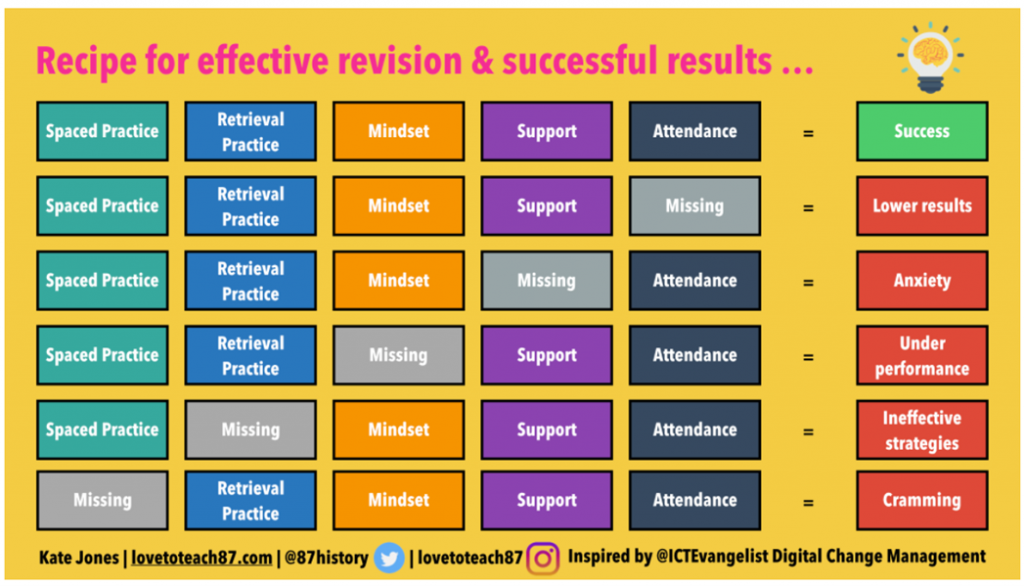
One area in which research is generating new insights is the study of learning, which is not as straightforward as we thought. Understanding a little about how learning works can help our Students study more effectively.
The key to learning more effectively – BBC Bitesize
Alongside our Teachers exploring this fascinating topic, we feel it is important for our Students and Parents to gain an insight into this too. As the exam season approaches, we are going to be sharing effective revision techniques with you over the coming weeks, so that our Students can feel supported from all directions in the lead up to the exams.
Revision habits and strategies
- Retrieval Practice
- Spaced Practice
- Concrete Examples
- Elaboration
- Interleaving
- Dual Coding
- Exam vocabulary
- Well-being strategies and revision tools
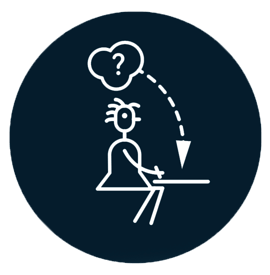
What is retrieval practice?
Retrieval practice is a learning strategy where we focus on getting information out. Through the act of retrieval, or calling information to mind, our memory for that information is strengthened and forgetting is less likely to occur. Retrieval practice is a powerful tool for improving learning.
Use your class notes and textbooks to make a list of the important information and content from all your subjects, the specifications are also useful here.
Then close your books and test yourself. You can create quizzes, use flashcards or complete past exam papers. Make sure you don’t use your notes!
Retrieve as much information as you can then check your answers using your notes and mark schemes. It’s important to know what you know and what you don’t know … yet!
Use your answers to inform the next stage of your revision, focus on the areas that you struggled to recall from memory.
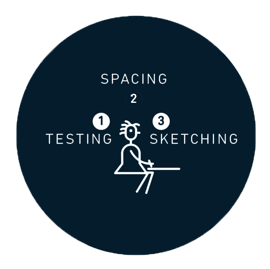
What is spaced practice?
Start planning early for exams and set aside a little bit of time everyday. Five hours spread out over two weeks is better than the same five hours all at once. [1] This is spaced practice and it is regarded as one of the most effective revision strategies.
Divide up your revision into short manageable chunks of time. When revising aim for 20 – 30 minutes per session. See revision planners.
Mass practice or cramming is not effective and can be stressful. This is when you study for a very intense period of time just before the exam.
You need to plan your time carefully to ensure all subjects and topics are covered in shorter chunks over a longer period of time.
Dividing up your revision into smaller, manageable sections will benefit you in the long term – the revision you do for mocks will stick for the final exams!
Another reason why cramming is a bad idea is that it inevitably replaces sleep, which is very important for learning and also for your mental and physical health more generally. So, resolve to form a healthy habit today and plan to space your learning! [2]
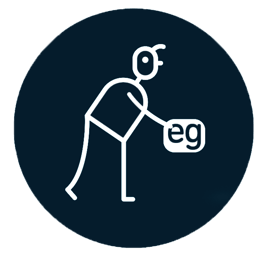
What are concrete examples?
“Students often gain a false sense of confidence in their abilities to memorise new material. Using concrete, relevant, real-life examples can help students understand abstract ideas and extend information retention.” [1]
Concrete examples involve finding and using specific examples to help develop and deepen understanding of abstract ideas.
Abstract ideas can be difficult to understand and explain. Our memories find it easier to remember concrete examples better than abstract information.
Foreshadowing can be explained with a very specific concrete example – in Romeo and Juliet the tragic ending is subtly foreshadowed in the very first act of the play.
Look through your books and class notes searching for concrete examples that are relevant to the idea you are studying or create your own if you can.
Elaboration
“The term elaboration can be used to mean a lot of different things. However, when we are talking about studying using elaboration, it involves explaining and describing ideas with many details. Elaboration also involves making connections among ideas you are trying to learn.”[1]
Elaboration involves asking further questions and making links to help you connect new information with what you already know.
Ask yourself questions about a topic to delve deeper. The more information you have about a specific topic the stronger your grasp and ability to recall.
When you learn about the causes of WW1 you could ask which causes are linked together? Which causes are short or long term? What was the major cause?
Another way to elaborate is to take two ideas or concepts and think about the various ways they are similar and how they are different. For example, the reactivity of Group 1 metals and Group 7 non-metals in chemistry.
Use Venn diagrams, mind maps and knowledge organisers to make synoptic connections with the specification.
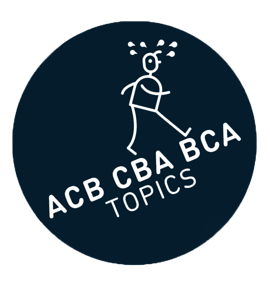
What is interleaving?
“Interleaving is a process where students mix and combine multiple subjects and topics while they study in order to improve their learning. Blocked practice on the other hand, involves studying one topic very thoroughly before moving to another. Interleaving has been shown to be more effective than blocked practice leading to better long-term retention”
Dual Coding
“Dual coding is the process of combining verbal materials with visual materials. There are many ways to visually represent materials, such as with infographics, timelines, cartoon/comic strips, diagrams and graphic organisers.”[1]
Dual coding involves you the learner drawing images, graphs, diagrams or timelines to support your revision notes.
When you are revising using your class materials find or create visuals that link with the information. Compare and combine the visuals with the words.
Don’t worry if you don’t consider yourself an artist – it isn’t about the quality of your illustrations, the focus is to improve and deepen your understanding.
Make sure your images/diagrams are relevant. Be careful when using photos as too many background images can detract from the main points.
Exam vocabulary – Command words
There will be subject specific key terms that you need to learn for each subject. Below are a range of command words that could be used in your exams. Do you understand what the exam question is asking you? Command words can vary slightly across different subjects so it is important you understand the command words in the exam question and in the correct context.
Analyse – Examine something in detail and try to explain or interpret it.
Annotate – Add to a diagram, image or piece of text to illustrate or describe features rather than just identify them which is labelling.
Assess – Consider different options/arguments/factors and weigh them up to reach a conclusion about their effectiveness or validity.
Calculate – Work out the value of something.
Compare – Give a point by point identification of similarities and differences.
Define – This means what is meant by … give the precise meaning of a term or concept.
Describe – Provide an account in detail of an event/individual/concept etc.
Discuss – Set out both sides of an argument and reach a conclusion, including evidence.
Evaluate – Consider different options/factors and reach a conclusion about their importance/impact/value/worth.
Examine – Consider carefully and provide a detailed account of the topic.
Explain – Provide a detailed description or interpretation of a term/concept etc.
Identify – Point out and name from a number of possibilities.
Illustrate – Refer to a specific case study or example (not illustrate as in draw).
Label – Point out specific features on a diagram, image or piece of text.
Justify – Explain why your selected choice/judgement is better than other options.
Summarise – Sum up the main points/arguments this can be the similar to outline.
Wellbeing during exams
The exam period can be stressful that is why it’s very important that you revise and prepare as this can help to reduce exam anxiety. In addition to revising there are other strategies you can do to look after your mental and physical health.
Diet is important so don’t neglect it during the exam period. Don’t skip meals, stay consistent with a healthy balance of meals and stay hydrated
Staying up late to revise is a bad idea! Sleep deprivation can have a very negative impact on concentration, performance and memory.
Take regular breaks from revision with exercise. Take part in a sport you enjoy, go for a walk or any activity that is active and part of your daily routine.
Relax during the exam period? Yes! It is essential that you do make time to switch off and have a break. Watch Netflix, read or talk to friends.
Useful links
The internet can be a great source of revision support. For subject specific examples of useful websites and YouTube videos ask your teachers for recommendations because the quality of revision materials online varies considerably.
Useful websites:
https://www.learningscientists.org
Useful social media sites:
Instagram: @learningscientists
Facebook: Learning Scientists
YouTube: The Learning Scientists
Twitter: @acethattest, @retrievelearn
Apps: Headspace (to support relaxation), Calm, Quizlet Flashcards
References:
https://www.retrievalpractice.org/
http://www.learningscientists.org/
https://academicaffairs.arizona.edu/Interleaving
Strengthening the Student Toolbox. Study Strategies to Boost Learning. John Dunlosky. (2013)
Make It Stick: The Science of Successful Learning. Mark A.McDaniel. Peter C. Brown. Henry L. Roediger III. (2014)
